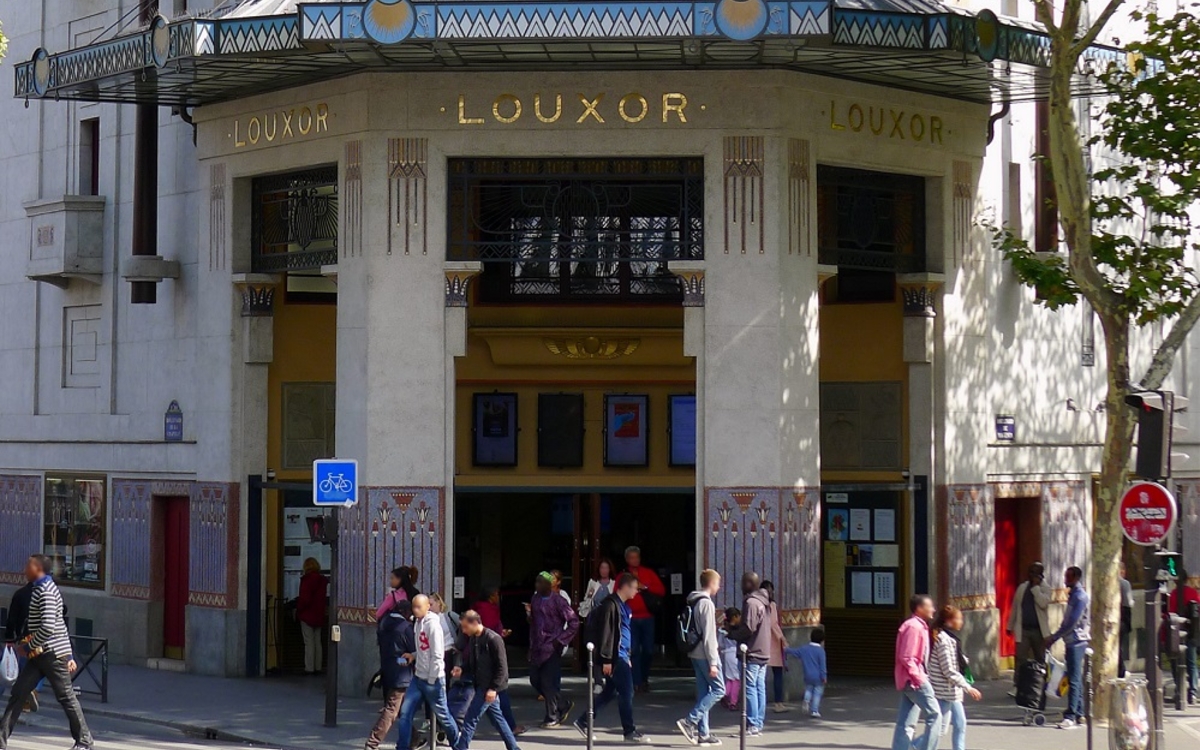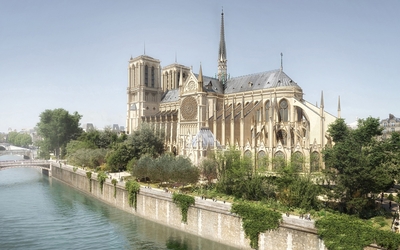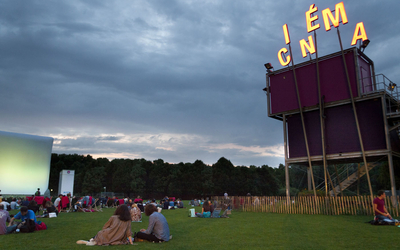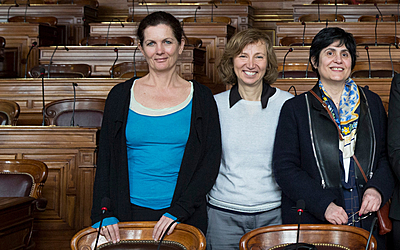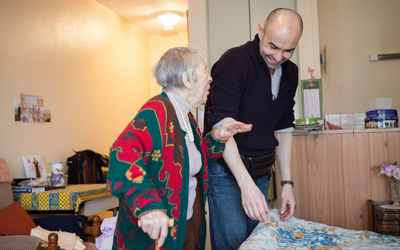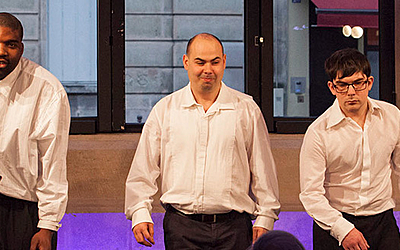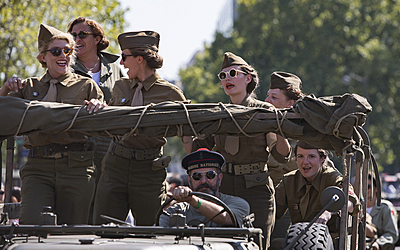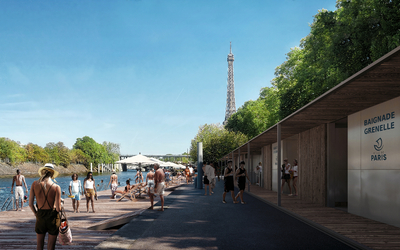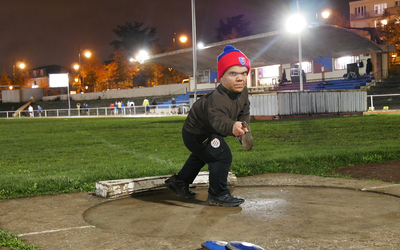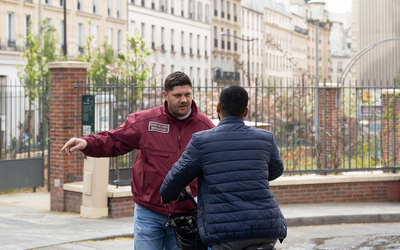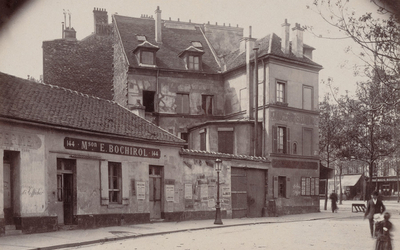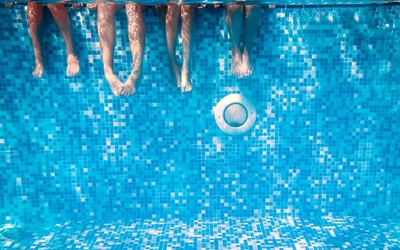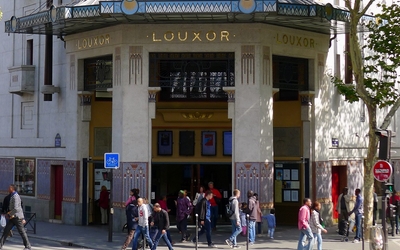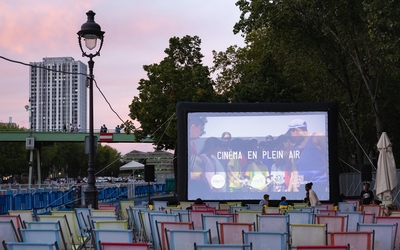Content
Cette page est aussi disponible en français
Building facades, places of worship, theaters… The capital boasts nearly half of the historic monuments in the Île-de-France region. Join us for a stroll to discover the most beautiful listed cinemas in Paris, perfect for those who wish to blend a love of heritage with the enchantment of the silver screen.
1 - Le Grand Rex (2nd)
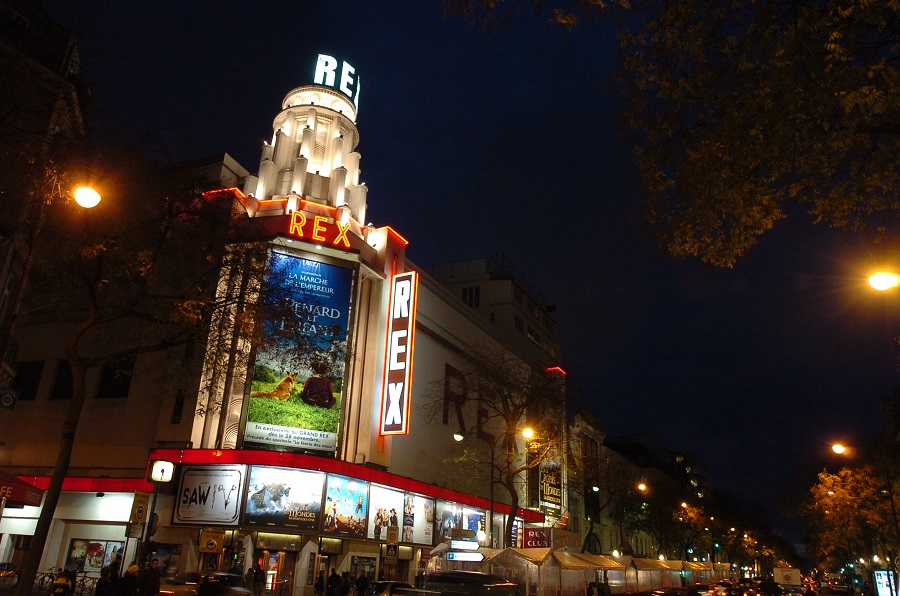
Facade of the Grand Rex
Credit
©Sophie Robichon/Ville de Paris
This giant cinema - the large auditorium seats 2,700 people - is a Parisian must-see. Built in the Art Deco style of the 1930s, the exterior facades and interior decor will dazzle you. The Grand Rex also boasts Europe's largest cinema screen. Called the "Grand Large", it was inaugurated for the premiere of Luc Besson's film Le Grand Bleu in 1988.
For the record…
Jacques Haïk, a wealthy film producer and distributor, embarked on the construction of a completely extravagant movie theater (with a ceiling rising to over 30 meters, representing a starry sky). His dreams came true on December 8, 1932, with the inauguration of the Grand Rex, the largest cinema in Europe. During the Occupation, it was requisitioned by the German army, and in 1942 it was the victim of a bomb attack.
Pinocchio was the first Disney film to be shown at the Rex on May 22, 1946. And from 1954 onwards, the "water fairy" - water games - enliven the great hall every Christmas, shortly before the screening of the end-of-year Disney film.
The Grand Rex is a scale model of New York's famous Radio City Music Hall.
The cinema and its art-deco façade were listed as a historic monument in 1981.
Cinéma Le Grand Rex
1 boulevard poissonniere 75002 PARIS
2 - Cinéma Le Champo (5th)
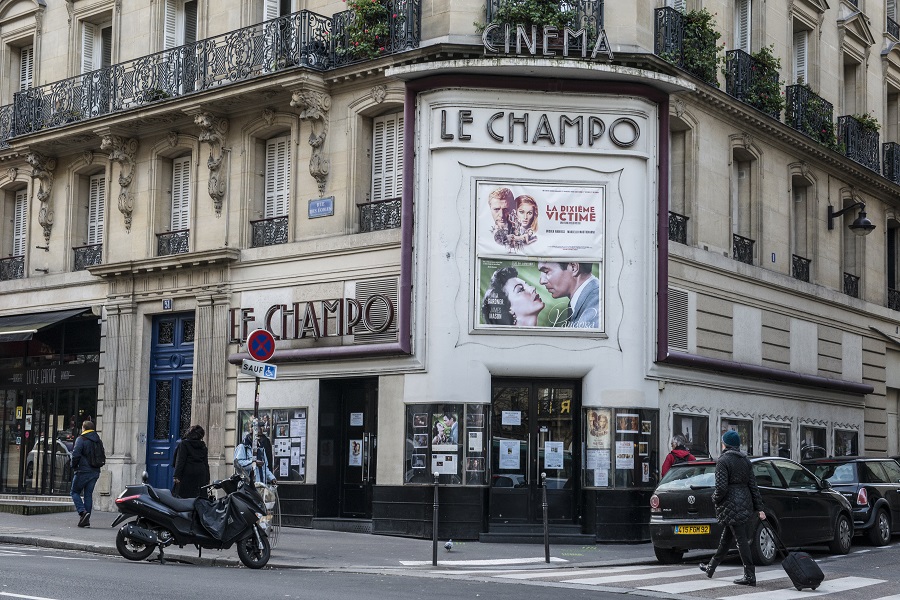
Cinéma Le Champo
Credit
©François Grunberg/Ville de Paris
Sitting on the corner of rue des Ecoles and rue Champollion in the 5th arrondissement, this art house cinema has single-handedly contributed to the Latin Quarter's cinema loving reputation. Le Champo owes its fame not only to the great François Truffaut, an obsessive cinema-goer, but also to its former owner Roger Joly. Le Champo brings together an audience entirely dedicated to repertory cinema, retrospectives and encounters with filmmakers. Today, Le Champo is still the place to be for cinephiles.
For the record…
Inaugurated on the site of a former bookshop, Le Champo opened on June 22, 1938. Roger Joly, a lighting industrialist, bought the hall. In 1941, a fire destroyed the original booth, which is was too small to be rebuilt to the new safety standards. Roger Joly and two engineers developed the famous "retro-reflex", an innovative projection system.
François Truffaut called the cinema his "headquarters". The cinema's programming gave pride of place to retrospectives and, from the 90s onwards, offered extensive cycles dedicated to major directors.
In 1989, Le Champo decided to dedicate its lobby to Jacques Tati, whose illuminated fiber-optic silhouette, straight out of "Les Vacances de Monsieur Hulot", now greets the public like a totem pole.
Le Champo has been a listed historic building since 2000.
Cinéma Le Champo
51 rue des Ecoles 75005 PARIS
3 - Le Louxor (10th)
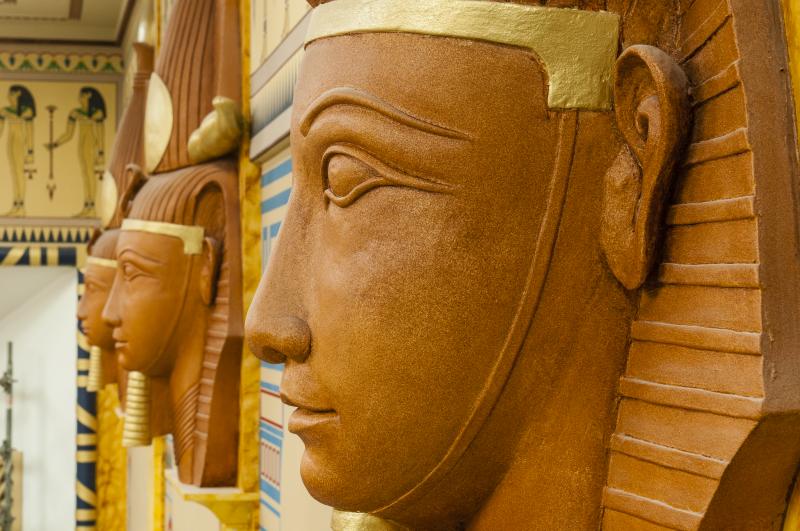
Le Louxor
Credit
©Mairie de Paris
Ready for a one-way ticket to Egypt? Built by architect Henri Zipcy and inaugurated on October 6, 1921, the Louxor - Palais du cinéma is one of the capital's most emblematic cinemas. First a cinema, then a nightclub, it was closed in 1988 and abandoned. It rose from the ashes in 2013 after two and a half years of Pharaonic renovation work to restore its Egyptian-Art Deco decor. Its vocation is to promote exchanges and encounters through a socialisation. Bonus: the bar's terrace offers an atypical view of the Sacré-Cœur.
For the record…
The astonishing Louxor hall will soon be one hundred years old… Created in an Art Deco style inspired by ancient Egypt, some elements are direct copies of Egyptian art (scarabs, lotus and papyrus friezes, winged discs), others are more fantastical elements of Egypt as seen by Westerners, such as the fanciful hieroglyphs decorating the ceiling beams of the main hall. The room's name is a reference to the Egyptian city. Although Egyptomania was all the rage in France in the 1920s, especially after the discovery of Tutankhamen's tomb, the Louxor is a unique example of an Egyptian hall in Paris.
The Louxor was listed as a historic monument on October 5, 1981.
Le Louxor - Palais du Cinéma
170 Boulevard Magenta 75010 Paris
4 - Le Ranelagh (16th)
In 1931, the theatre was transformed and enlarged to become an art house cinema, one of the capital's leading film venues, frequented by the likes of Gérard Philippe and Marcel Carné. Over the years, the theater has diversified, and each management team has encouraged other projects combining the arts: cinema and exhibitions under Henri Ginet; cinema and theater under Claude Condroyer and Micheline Daguinot; music, circus and theater under Madonna Bouglione. Today, Catherine Develay turned a new page with a mainly theatrical and musical program, highlighting the acoustics of this wonderful hall. The current 300-seat auditorium has retained its character, with carved oak paneling lining the orchestra and balconies, topped by a ceiling decorated with painted coffers.
For the record…
In 1722, banker Samuel Bernard bought the stately château de Passy for his mistress Madame de Fontaine. The estate extended over 8 hectares from the Maison de Radio France to Avenue Mozart. In 1747, it became Château de Boulainvilliers, occupied by Alexandre Jean Joseph Le Riche de La Pouplinière, fermier général under the reign of Louis XV, who had a theater built at the end of his ground's driveway. An enlightened patron of the arts, he gathered a circle of artists and intellectuals around him, including such great names as Voltaire, Quentin de La Tour, Van Loo, Stamitz, Rameau…
The château was abandoned for many years after the French Revolution. Towards the end of the 19th century, Louis Mors, a famous car manufacturer, acquired a large part of the estate, on which he had a theater built in 1894 on the site of the La Pouplinière music salon. This music enthusiast fostered the emergence of musical aesthetics of the early 19th and 20th centuries, programming artists such as Bizet, Terrasse, Wagner…
In 1931, the converted and enlarged theater became an art house cinema, one of the capital's leading film venues.
The auditorium and its decor were listed as a historic monument on October 6, 1977.
Théâtre Le Ranelagh
5 Rue des Vignes 75016 Paris
We want to hear from you!
Was this information useful to you?
Please note: we cannot reply via this form (please do not include any personal information).
Read also
Still haven't heard of them?
A selection of good deals that are timeless, but worth it all year round!
